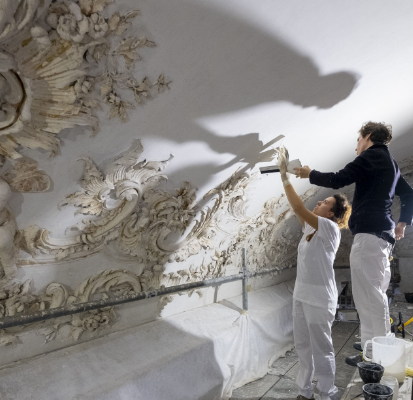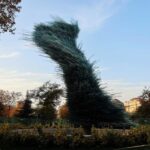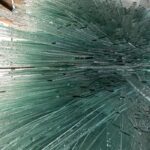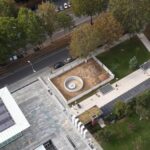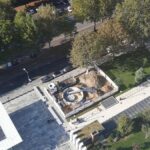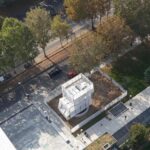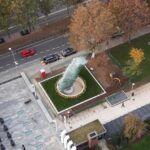The laboratory has large spaces suitable for the study and conservation of materials such as natural stones, wall paintings, mosaics, stucco and graffiti. These spaces are equipped with advanced tools for experiments and insights needed for conservation. Activities vary depending on the type of artifact and include works from archaeological excavations, such as fragments of mosaic floors, wall paintings, and stucco and stone works.
The laboratory coordinates and actively participates in studies and restorations on numerous sites, including long-term projects such as the recovery of pictorial cycles in the former Church of San Marco in Vercelli and Romanesque paintings in the ancient Church of Sant’Andrea, part of the Sanctuary of the Consolata in Turin.
He has also participated in major restorations, such as that of the Galleria dei Carracci at Palazzo Farnese in Rome, funded by the World Monument Fund, and in the design of interventions on the facades of Palazzo Madama in Turin and the Cavallerizza of the Palazzo Ducale in Mantua.
Director of Laboratories
Michela Cardinali
Deputy Director of Laboratories
Roberta Genta
Responsible for the design and coordination of construction sites
Daniela Russo
Area Manager
Marie-Claire Canepa
Restorers
Roberta Coco
Irene Malizia
Valeria Ponza
Art historian
Paola Manchinu
CASE STUDY
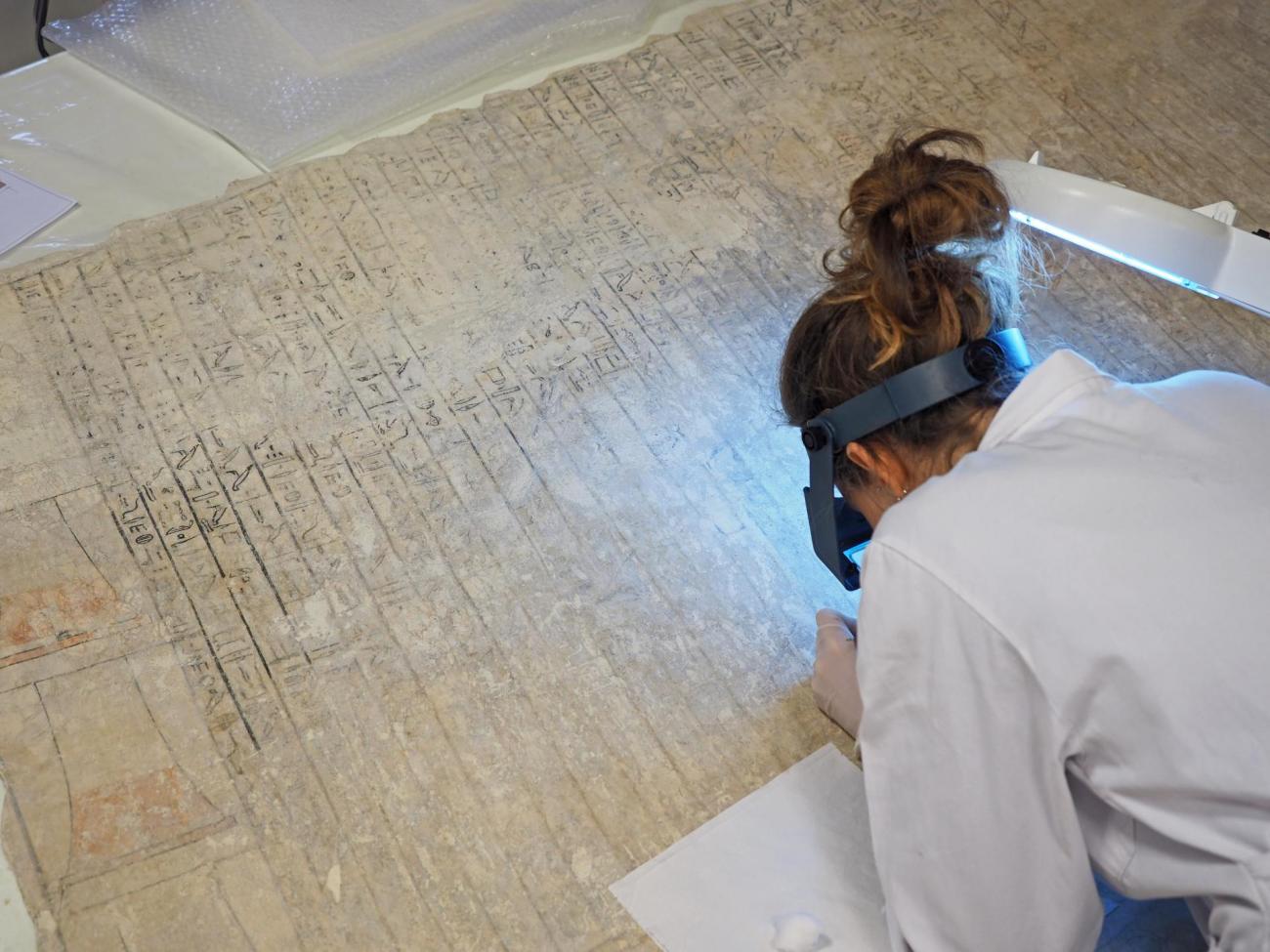
Henib's Tomb Wall Paintings
Middle Kingdom, 12th Dynasty, 1976-1794 BC
Turin, Egyptian Museum
The project to recover the torn wall paintings from Henib’s tomb in Qau el-Kebir was carried out as part of the exhibition Returns 2018 of Intesa Sanpaolo. The intervention involved restorers and scientific staff from the Centre who, together with Egyptologists from the Egyptian Museum and the Superintendence and scientific experts from various research bodies, studied and analysed the building materials and those from previous interventions in order to correctly guide the restoration operations. The wall paintings had been torn from a burial chamber found in 1908 during the excavation campaigns of the Archaeological Mission of the Egyptian Museum directed by Ernesto Schiaparelli.
Part of the intervention concerned the study of a system of preparation and exhibition presentation for the correct use of the paintings. The reconstruction of Henib’s tomb is currently set up in the exhibition “Category: Invisible archaeology’ at the Egyptian Museum.
CASE STUDY
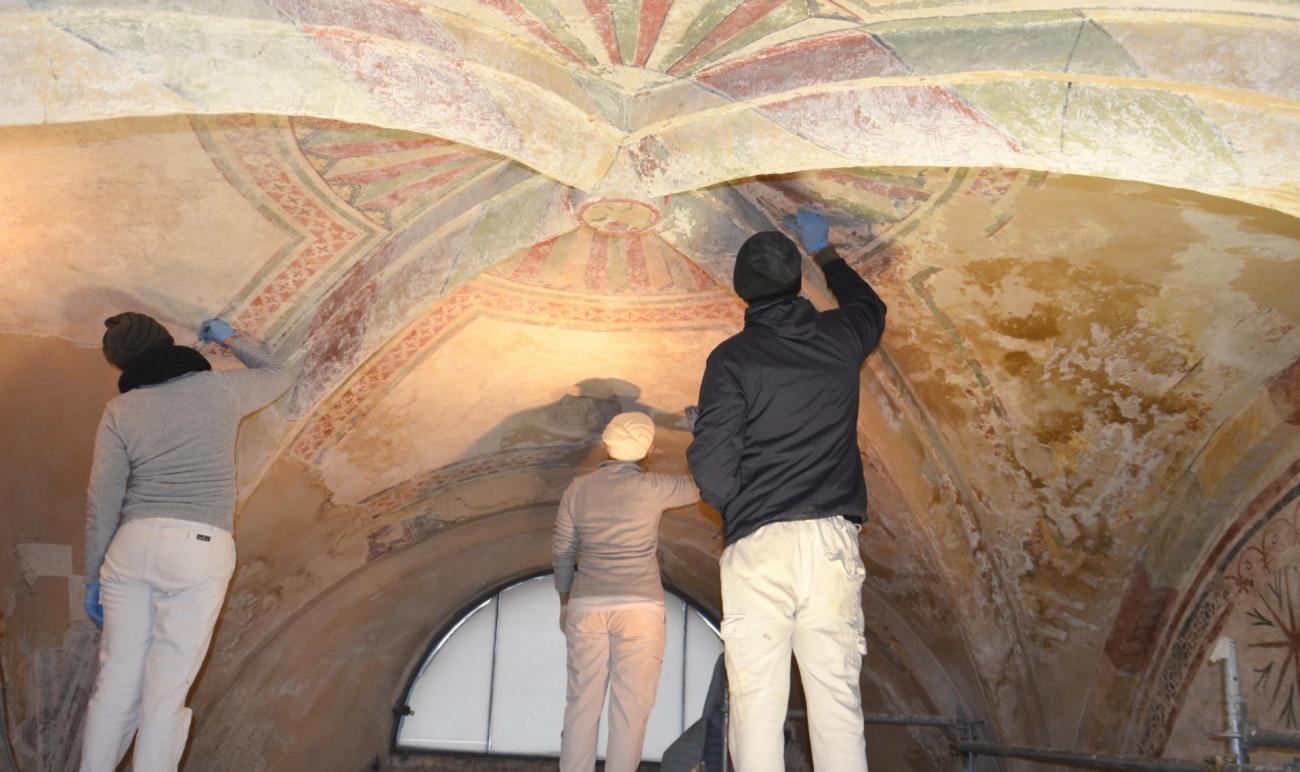
Category: Wall paintings
14th – 15th century
Vercelli, former Church of San Marco
Since 2008 the Center has been present with knowledge and restoration sites in the former Church of San Marco in Vercelli, which in recent centuries has become a covered market and now recovered as an exhibition venue.
The various construction sites that have taken place over the years have made it possible to bring to light extraordinary pages of three and fifteenth-century Piedmontese mural painting. In particular, among the most significant recoveries carried out between 2017 and 2018 in the bays on the sides of the high altar, thanks to the support of the CittàItalia Foundation and the Municipality of Vercelli, an extraordinary fourteenth-century capital adorned with the coat of arms of the Visconti of Milan stands out.
CASE STUDY
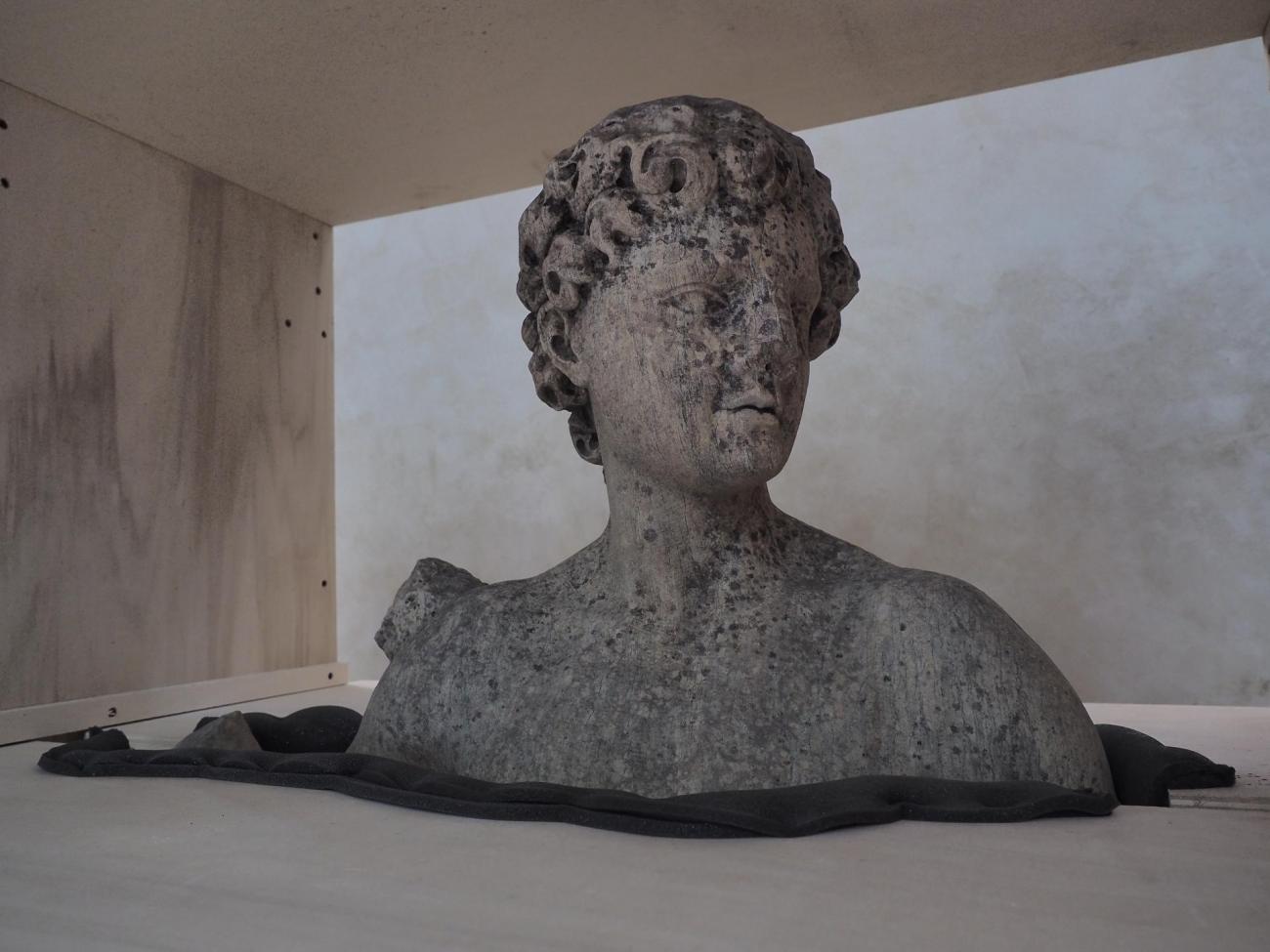
Statues from the Fountain of Hercules, third quarter of the 17th century
Bernardino Quadri, Bernardo Falconi and sculptors from Lugano
The Centre supports the large restoration and recovery site of the seventeenth-century Fountain of Hercules in the Gardens of the Reggia di Venaria with the restoration of the rich apparatus of statues and ornamental sculptures found in the deposits of the Museum of Antiquities, the Royal Palace of Turin and the Royal Palace itself. The project to recompose the fountain, promoted by the Consorzio delle Residenze Reali Sabaude – La Venaria Reale with the Consulta per la Valorizzazione dei Beni Artistici e Culturali di Torino, has led to the identification of eight full-length statues, two of which are colossal (Hercules and Diana), whose restoration work, already started with a first phase of study and documentation, is being carried out by the Centre’s restorers, also with the involvement of the ordinary teaching activity of the Degree Course.
CASE STUDY
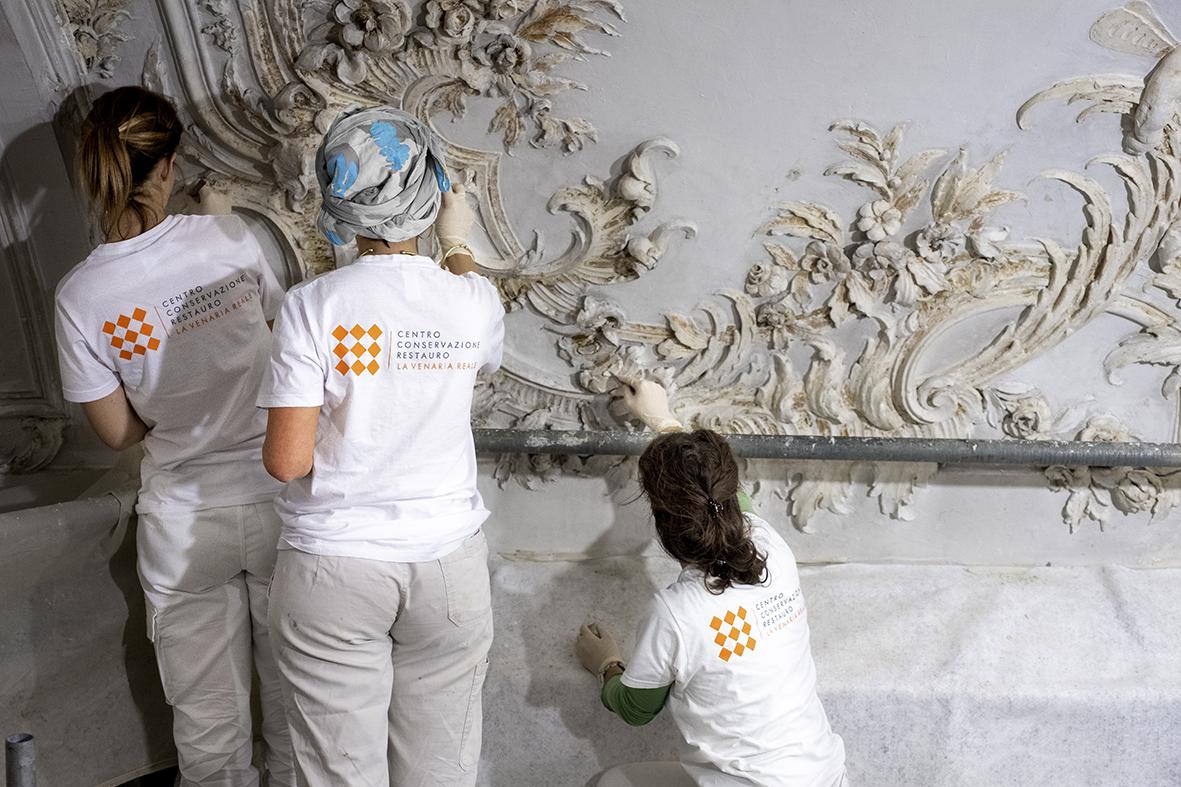
Hall of the alcove
Palazzo Chiablese, Turin, Italy
The extraordinary discovery in 2018 of the flap desk with side scans made by Piffetti in 1767 and its restoration provided an opportunity to start the recovery of some rooms on the main floor of Palazzo Chiablese, where the precious piece of furniture was kept in the 19th century.
The restoration of the eighteenth-century gallery, transformed in the mid-nineteenth century into a bedroom with an alcove and marked in the post-war period by heavy maintenance work following the bombings of 1943, led to the recovery of the rich decorative stucco apparatus of the vault and the boiseries and the flower lambriggio painted by Michele Rapous.
The recovery project has also extended to two other rooms of the courtly apartment of the Dukes of Chiablese, intended for the Audience Chamber and the Bedroom, with maintenance work to restore the full legibility of the decorative vaults and furnishings.
CASE STUDY
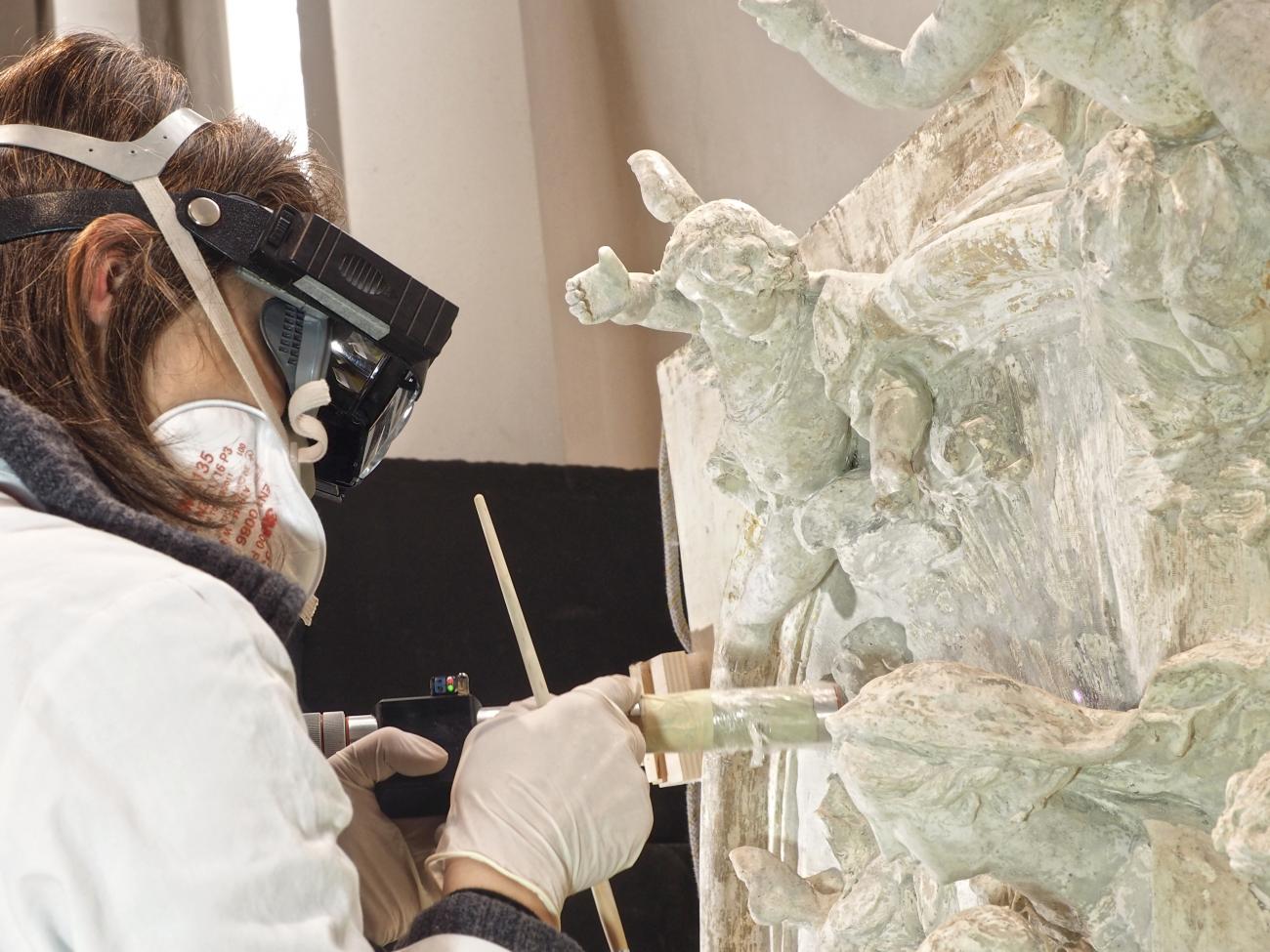
Blessed Amedeo interceding before the Madonna and Child for victory at the Battle of Turin, 1729 – 1730
Bernardino Cametti
The large plaster bas-relief depicting the Blessed Amedeo interceding before the Madonna and Child for the victory in the Battle of Turin is a sketch, almost unknown, executed for the marble shovel the High Altar the Basilica of Superga, commissioned to celebrate the Savoy victory over the French during the siege of Turin in 1706.
The work, which comes from the Pontifical Irish College in Rome, is exposed for the first time at the Reggia di Venaria in the exhibition ‘Sfida al Barocco. Rome Turin Paris 1680-1750’.
The JRC has been entrusted with the delicate restoration, financed by Intesa Sanpaolo as part of the 19th edition of the Restitutions programme.
CASE STUDY
The Whole
Costas Varotsos
The fountain ‘La Totalità’, the work of the Athenian artist Costas Varotsos, has been the subject of attention from the Centre, the City of Turin and Intesa San Paolo since 2017 because of its precarious conservation status: the sculpture, in fact, located in the market area of Piazza Benefica in Turin, was exposed to the weather, to numerous forms of biological degradation, mainly due to the presence of birds, and to damage of vandalism.
Hence the need to relocate the monument to a more suitable place. The project was born, following careful analysis, evaluation and verification, which planned to reposition the work within the Giardini Grosa, along Corso Vittorio Emanuele II, next to the Intesa Sanpaolo skyscraper, on the basis of a proposal drawn up by the artist Varotsos.
The Conservation and Restoration Centre was in charge of managing and supervising the process, acting as a support for the correct relocation of the sculpture to the designated place.
The work has been visible to the public since 2 November 2020.







